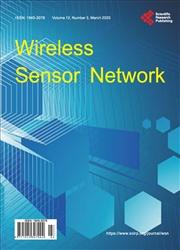Robust Cubic-Based 3-D Localization for Wireless Sensor Networks
引用次数: 3
Abstract
The rapid progress of wireless communication and the availability of many small-sized, light-weighted and low-cost communication and computing devices nowadays have greatly impacted the development of wireless sensor network. Localization using sensor network has attracted much attention for its comparable low-cost and potential use with mon- itoring and targeting purposes in real and hostile application scenarios. Currently, there are many available approaches to locating persons/things based on global positioning system (GPS) and radio-frequency identification (RFID) technologies. However, in some application scenario, e.g., disaster rescue application, such localization devices may be damaged and may not provide the location information of the survivors. The main goal of this paper is to design and develop a robust localization technique for human existence detection in case of disasters such as earthquake or fire. In this paper, we propose a 3-D localization technique based on the hop-count data collected from sensor anchors to estimate the location of the activated sensor mote in 3-D coordination. Our algorithm incorporates two salient features, cubic-based output and event-triggering mechanism, to guarantee both improved accuracy and power efficiency. Both simulation and experimental results indicate that the proposed algorithm can improve the localization precision of the human existence and work well in real environment.基于鲁棒立方的无线传感器网络三维定位
随着无线通信技术的飞速发展,许多小体积、轻重量、低成本的通信和计算设备的出现,极大地影响了无线传感器网络的发展。基于传感器网络的定位技术因其低成本和在实际和敌对应用场景中具有监控和目标定位的潜在用途而受到广泛关注。目前,基于全球定位系统(GPS)和射频识别(RFID)技术,有许多可用的方法来定位人/物。但是,在某些应用场景中,例如灾难救援应用中,这种定位设备可能会损坏,无法提供幸存者的位置信息。本文的主要目标是设计和开发一种鲁棒的定位技术,用于地震或火灾等灾害情况下的人类存在检测。在本文中,我们提出了一种基于从传感器锚点收集的跳数数据的三维定位技术,以估计激活的传感器在三维协调中的位置。我们的算法结合了基于立方的输出和事件触发机制两个显著特征,以保证提高的精度和功耗效率。仿真和实验结果表明,该算法能够提高人体存在的定位精度,在真实环境中效果良好。
本文章由计算机程序翻译,如有差异,请以英文原文为准。
求助全文
约1分钟内获得全文
求助全文

 求助内容:
求助内容: 应助结果提醒方式:
应助结果提醒方式:


